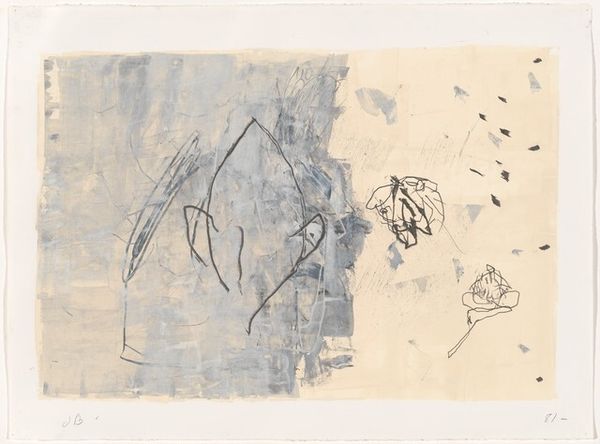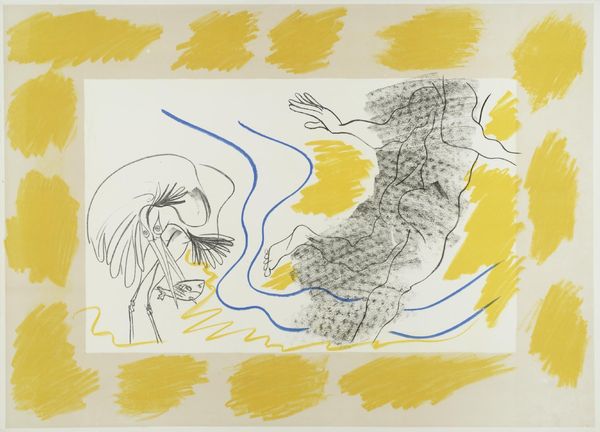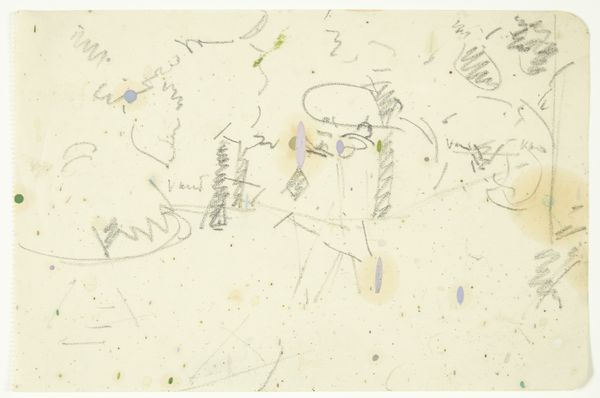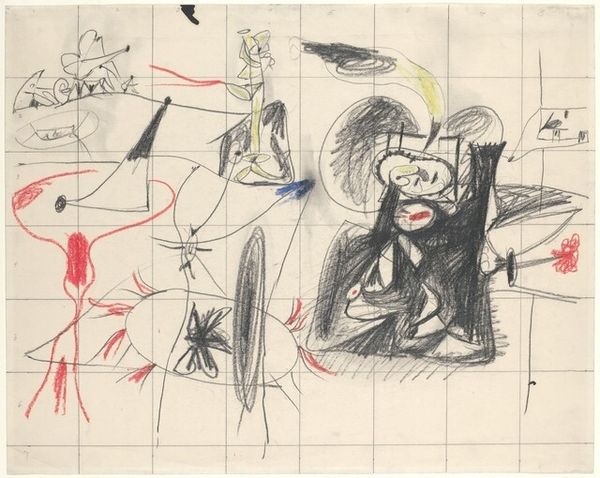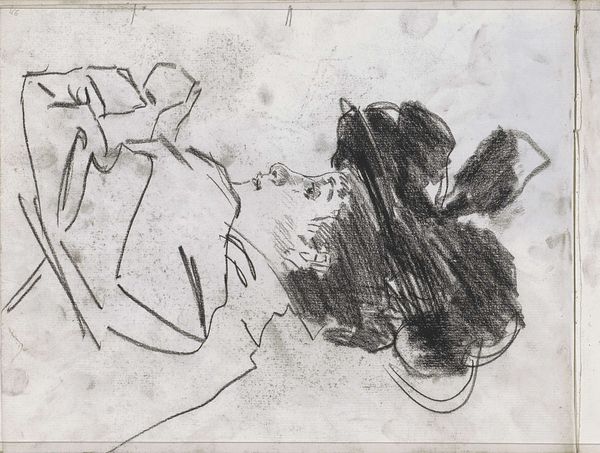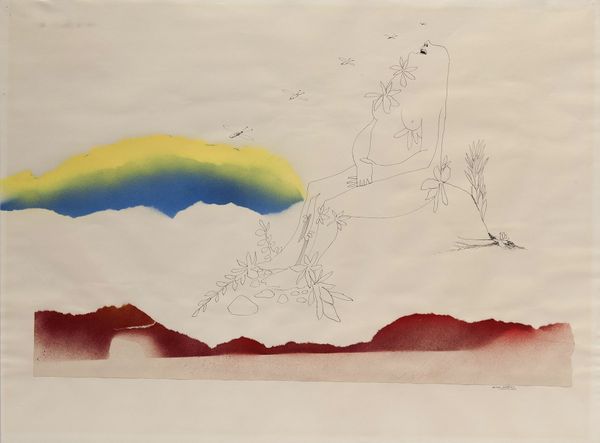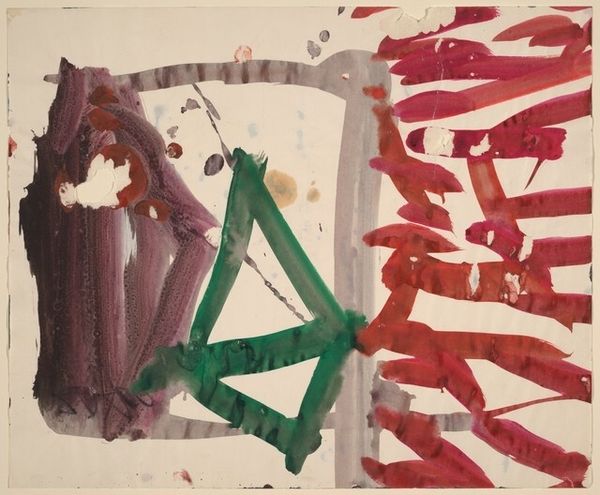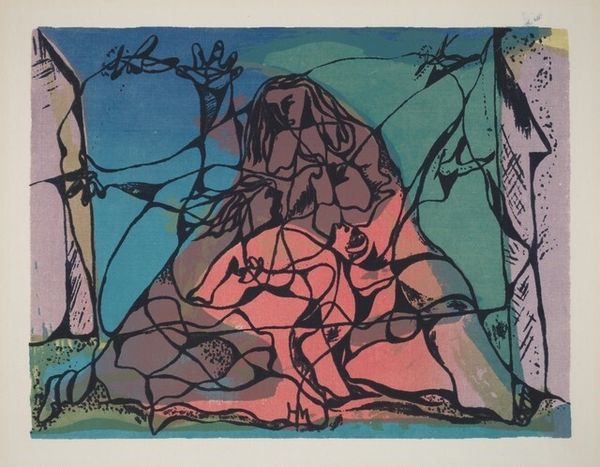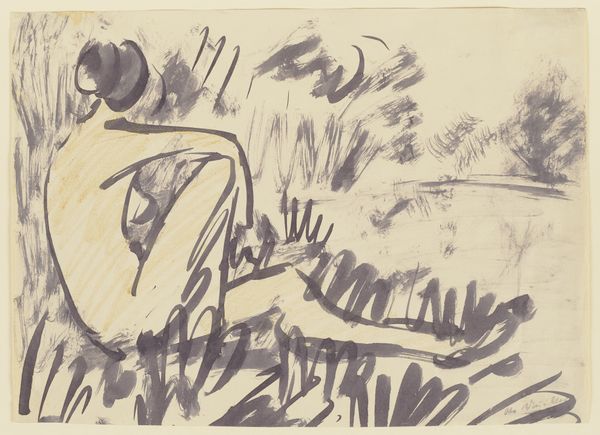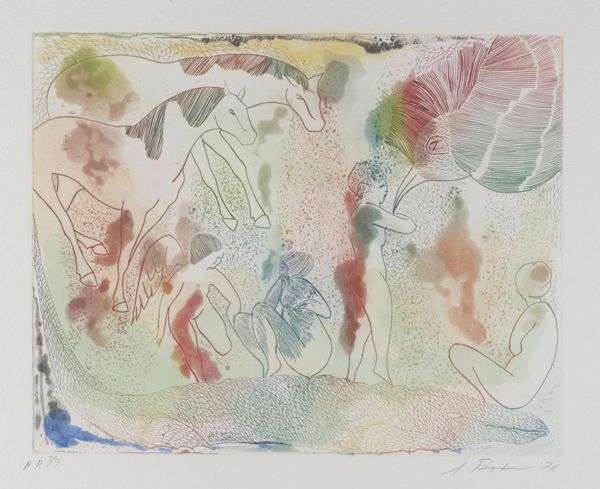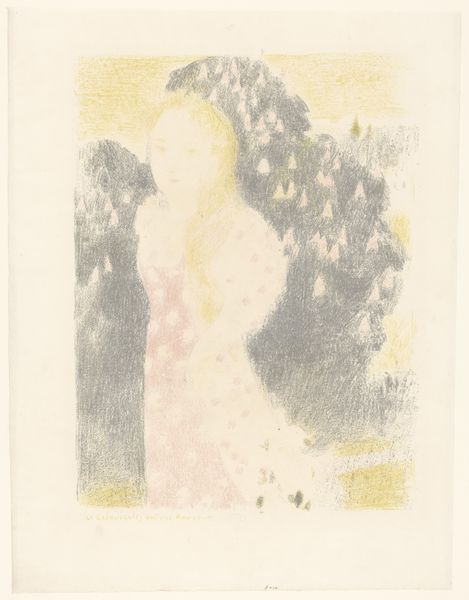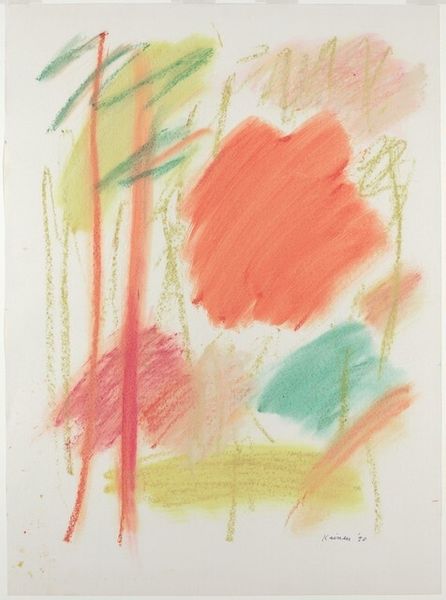
drawing, print, watercolor
#
drawing
#
water colours
# print
#
figuration
#
watercolor
#
nude
Dimensions: plate: 37.47 × 56.67 cm (14 3/4 × 22 5/16 in.) sheet: 53.34 × 70.8 cm (21 × 27 7/8 in.)
Copyright: National Gallery of Art: CC0 1.0
Editor: This is "Tom and Nicola Posing Nude," a print by Andrew Hudson from 1989, which looks like it uses watercolor and drawing. I’m immediately struck by the contrast of unfinished grey sketch lines against the vivid watercolor splashes, especially that bold red chair. How would you approach understanding this piece? Curator: This piece raises some fascinating questions about artistic production. The work’s use of printmaking—typically considered a method of reproduction—combined with unique hand-painted elements disrupts notions of originality. Notice how the stark, almost industrial quality of the lines in the drawing are countered by the vibrant, handmade watercolour elements? Editor: Yes, that tension is really noticeable! Why do you think Hudson chose to combine these different approaches? Curator: It forces us to consider the act of labor involved in artmaking. Is it about efficiently reproducing an image, or investing in the tactile experience of applying colour and line? Also, consider the “nude” theme. Instead of traditional oil paints and polished studio settings, he employs a relatively inexpensive material – watercolor – on paper. What does it say about how nudes are represented? Is he challenging conventional views on consumption and representation? Editor: That’s a really interesting way to consider it! Thinking about the cheapness of watercolour versus traditional methods – is it almost a critique of the art market itself? Curator: Exactly! The work then, is less about capturing the idealized human form and more about unveiling the process and economics behind art’s creation and consumption. Consider the chair as a prop, for instance; is the bright colour a symbol for something? Or is it another available thing within his artistic reach that allows for the construction of his own commentary on his art practices and how to approach representing bodies and their surrounding spaces? Editor: I see it now; thanks so much for helping me unravel those layers of materiality. I definitely have a new way of looking at how artistic choices communicate socio-economic ideas. Curator: And hopefully, this gives a broader perspective on how we examine artwork from different viewpoints.
Comments
No comments
Be the first to comment and join the conversation on the ultimate creative platform.
